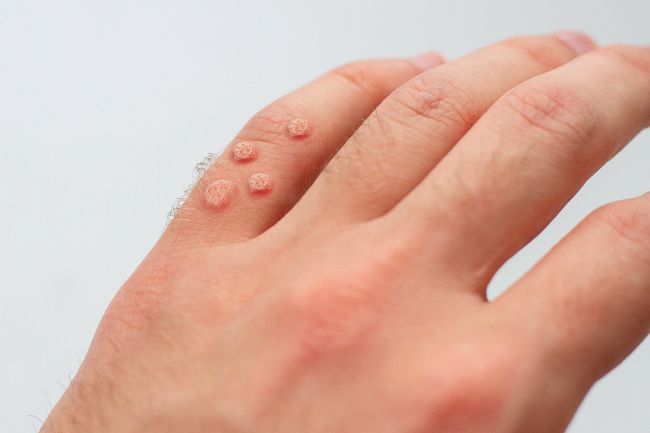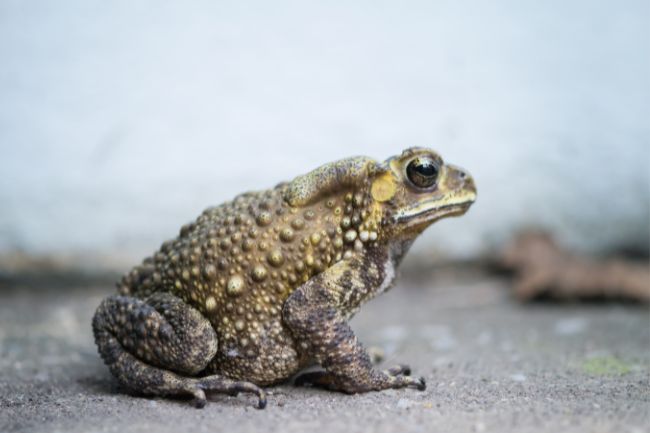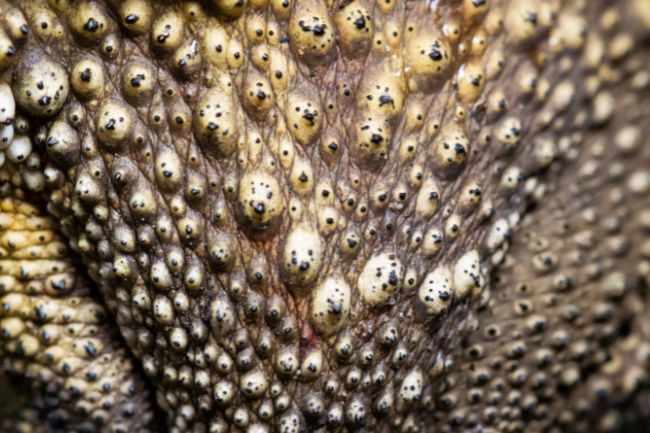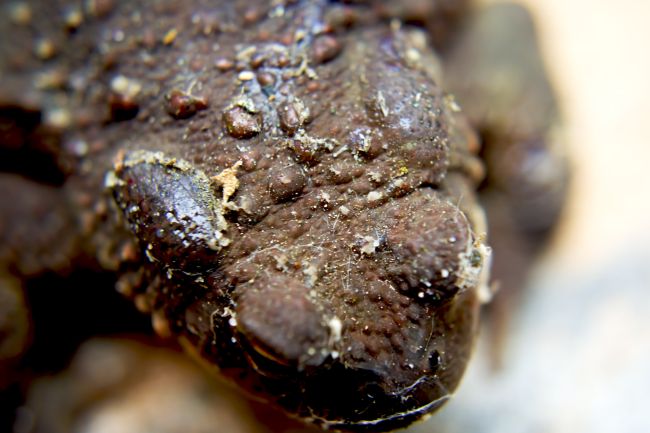A warty frog is generally known as a toad. These warts are not the same as human warts, being glands on the toad’s skin. It isn’t possible to catch warts from toads.
What are Warts?
When we think of warts there are certainly a few negative connotations. The word brings to mind witches, illness and discomfort. Warts are hardened growths, which can appear almost anywhere on the body. They are particularly common on hands and feet.
Warts are benign, although they can look unappealing and feel uncomfortable. This common condition is spread through the human papilloma virus (HPV). The virus causes an excessive production of keratin. This protein is what makes up our hair and fingernails. Its presence in the top layers of the skin therefore causes a hard and rough surface, the wart.

Warts are very common in humans, this is partly because the virus is easily spread through contact. The skin is particularly vulnerable to the virus when it is wet or broken. So, the question is, are frogs to blame for our warts?
Also read: Do Frogs Carry Diseases?
Can You Get Warts From Frogs?
When is a frog a toad? Well the answer is that toads are simply warty frogs. While the genus Bufo, within the family Bufonidae, is made up of the true toads, there are many other toad species dotted throughout the various frog families.
This is because the word toad is generally associated with any frog species that have a warty appearance. Therefore, if you see a frog with warts, it’s probably a toad!

However, all is not as it seems with a toad’s warts. Although they have long been known as ‘warts’, the raised bumps on a toad’s skin are actually something completely different. Warts, as we define them, are growths caused by a virus. They are not supposed to be present, and therefore would only appear once the virus has taken hold.
Instead of a growth caused by external influences, what toads have is raised glands, which are actually a very important part of their anatomy. All frog and toad species have glands within their skin. Many of these glands are mucous glands, which release a thick liquid that helps prevent the frog from drying up.
The glands that are so prominent on a toad’s back are what is known as granular and parotoid glands. Not all toads have parotoid glands, these being located behind the eyes. What the glands do is release noxious chemicals that make the toad unpalatable or poisonous to eat.
Such witchcraft isn’t only found in toads. Many frog species also release toxins through granular and parotoid glands, a famous example being poison dart frogs. In toads, these glands are simply more prominent, which is why they are singled out as toads.
The strength of the toxins secreted varies massively between species. In some species the effects would not be noticeable to a human, whereas others can result in a painful death. Such secretions are a valuable tool for toads, as they have few other defense mechanisms, lacking sharp teeth and claws.
Another interesting aspect of their warty skin is that it can help camouflage their shape against background vegetation. Toads can spend much of their time on dry land, wandering through leaf litter or sitting in grasslands. With a rough texture to their form, they can blend in more easily to the background, standing out less as a tasty snack to passing wildlife.
So, when it comes to the question of whether toads can give you warts, the answer is a resounding no.

Our warts are caused by a virus, passed from human to human. While the virus can be passed by handling the same objects, a toad simply isn’t a suitable carrier. For toads, their warts are part of what they are, rather than something that has infected them, and we certainly cannot catch the DNA that has caused their wonderful warty skin.
Also read: Frog Food: Discovering What Wild and Pet Frogs Eat
What do Frog Warts Look Like?
The size and pattern of warts on toads can vary massively between species, and even individuals. On many species the warts cover most of the skin on their backs, in small bumps. Some species may have some larger warts, along with lots of smaller bumps. Patterns, such as black dots, are often also present to help further break up the outline of the textured amphibian.
In many species that have parotid glands, these tend to be larger and more prominent than the granular glands. In some species of toad these bumps can appear to form patterns, but in many they are far more random, as this is more beneficial when attempting to camouflage.
Are Frog Warts Dangerous?
The glands that look to us like warts, are specifically designed to release toxins onto the toad’s skin. This means that if you were to touch that toad, you may get those toxins on your skin.

For some species, you really wouldn’t notice that this had occurred, and no harm would come of it. For others, the very fact that you’ve touched these toads can lead to life threatening consequences.
It’s also worth knowing that most amphibians don’t really want to touch them. This is because they can absorb harmful substances from our skin, through theirs. This might be suncream, or hand lotion, or even just the natural salts on our skins. While these substances don’t seem harmful to us, they could result in the toads becoming ill or even dying.
The good news, for everyone, is that if you don’t touch a toad (or frog) then both you and it will feel no ill effects, no matter how toxic either of you might be.
Does Frog Pee Cause Warts?
In order for frogs to cause warts it would need to contain the HPV virus, which it luckily doesn’t. It can however contain toxins or bacteria that may be harmful to humans, particularly if applied to broken skin or ingested.
Luckily, few of us will have to deal with frog pee on a daily basis. If a frog pees in its natural environment the liquid will simply soak away or be broken down.
So not to worry, whether it’s the warts on their backs or the pee in their ponds, frogs really can’t give you warts.

